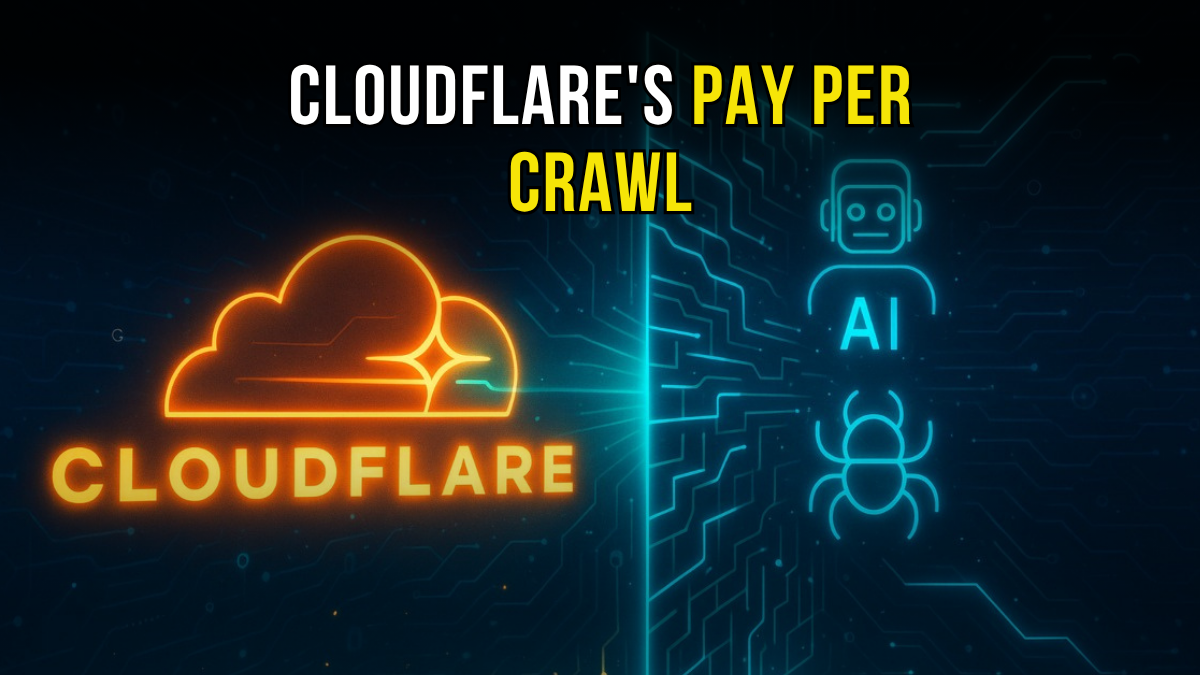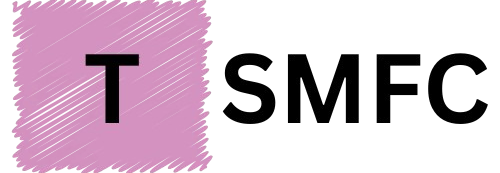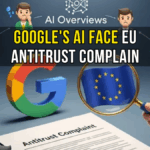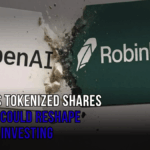The internet is facing a fundamental shift in how AI companies access and use online content. Cloudflare, the cloud infrastructure giant powering roughly 20% of the web, has introduced a revolutionary approach that could reshape the relationship between content creators and artificial intelligence firms.

Starting July 1, 2025, Cloudflare implemented a new default setting that blocks AI crawlers from accessing website content unless they explicitly request permission. This marks the first time a major internet infrastructure provider has taken such a decisive stance on AI content scraping, putting control back in the hands of content creators and publishers.
The Problem with Current AI Content Scraping
For years, AI companies have been crawling websites to collect data for training their models and powering their services. This process typically happens without explicit consent from content creators, and often without any compensation or attribution. The result is a broken system where publishers lose traffic, revenue, and control over their intellectual property.
The traditional model worked well for search engines like Google. They would crawl websites, index the content, and send users to the original source through search results. This created a mutually beneficial relationship where publishers received traffic and ad revenue in exchange for being indexed.
However, AI systems operate differently. Instead of directing users to the original source, they often provide direct answers based on scraped content. This means users get the information they need without ever visiting the publisher’s website, effectively cutting out the content creator from the value chain.
Cloudflare’s Revolutionary Approach
Cloudflare’s new Pay Per Crawl system addresses this imbalance by implementing a permission-based model. Under this system, website owners must explicitly consent to AI crawlers accessing their content. The default setting is “no access,” which means AI companies can no longer simply take content without permission.
When an AI company wants to access a website’s content, they must declare several key pieces of information:
- Who they are and what company they represent
- What specific data they want to access
- How they intend to use the content (training, inference, or search)
- Why they need access to this particular content
This transparency allows publishers to make informed decisions about which AI companies can access their content and under what conditions.
How Pay Per Crawl Works
The Pay Per Crawl system operates as a marketplace where publishers can set terms and prices for AI companies to access their content. Here’s how the process works:
For Publishers: Website owners can specify which AI crawlers they want to allow, block specific companies, or require payment for access. They maintain full control over their content and can revoke access at any time.
For AI Companies: Organizations that want to access content must identify themselves clearly and negotiate terms with publishers. This could involve one-time payments, ongoing licensing fees, or other arrangements.
For Users: The system aims to preserve the quality and diversity of online content by ensuring creators are compensated for their work, encouraging continued content creation.
Industry Support and Early Adopters
The initiative has received widespread support from major publishers and content platforms. Companies like Condé Nast, Gannett, Dotdash Meredith, TIME, and The Atlantic have all endorsed Cloudflare’s approach.
“This is a critical step toward creating a fair value exchange,” said Condé Nast CEO Roger Lynch. The sentiment reflects a growing frustration among publishers who have seen their content used to train AI models without compensation.
Reddit CEO Steve Huffman and Pinterest’s Bill Ready have also praised the initiative, viewing it as a way to bring transparency and accountability to AI content consumption.
ProRata, an AI startup behind the Gist.AI search engine, has become one of the first companies to publicly commit to participating in Pay Per Crawl. Founder Bill Gross stated that the company believes “all content creators and publishers should be compensated when their content is used in AI answers.”
The Impact on AI Companies
This new system could significantly disrupt how AI companies source their training and inference data. Many AI firms have built their business models around freely available web content, assuming they could access anything published online.
With Cloudflare’s new default blocking in place, AI companies will need to:
- Develop relationships with publishers
- Negotiate licensing agreements
- Budget for content acquisition costs
- Be more selective about which content they access
Some industry observers believe this could create a competitive advantage for AI companies that can strike better deals with high-quality publishers. As Nicholas Thompson, CEO of The Atlantic, noted: “This could dramatically change the power dynamic. Up to this point, AI companies have not needed to pay to license content, because they’ve known that they can just take it without consequences.”
Challenges and Limitations
While Cloudflare’s system represents a significant step forward, it’s not without challenges. The company acknowledges that determined bad actors could still find ways to bypass these protections. Tutorials and tools for circumventing content blocking already exist and will likely continue to evolve.
However, Cloudflare’s approach is designed to be opt-out rather than mandatory. Websites that want to allow unrestricted scraping can disable the blocking at any time. The goal is to change the default assumption from “everything is freely available” to “access requires permission.”
Another challenge is ensuring widespread adoption among AI companies. While some startups like ProRata have committed to the system, it remains unclear whether industry giants like OpenAI, Anthropic, or Google will formally participate.
The Broader Implications
Cloudflare’s move represents more than just a technical change – it’s a fundamental shift in how we think about content ownership and AI development. By positioning itself as a gatekeeper between AI companies and web content, Cloudflare is taking on a role similar to what Apple plays in the mobile app ecosystem.
This gatekeeping position could give Cloudflare significant leverage in shaping the future of AI content access. It may also pave the way for a more structured marketplace where publishers and AI developers can engage under transparent, monetized terms.
The implications extend beyond individual companies. This approach could influence future legislation around AI content usage and digital rights. It might also encourage other infrastructure providers to adopt similar policies, creating a more comprehensive system of content protection.
What This Means for Content Creators
For publishers, bloggers, and other content creators, Cloudflare’s Pay Per Crawl system offers several potential benefits:
Revenue Opportunities: Content creators can now monetize their work beyond traditional advertising models. High-quality, unique content could become a valuable commodity for AI companies.
Control Over Usage: Publishers can decide which AI companies can access their content and how it can be used. This prevents their work from being used to train competing AI systems or for purposes they don’t support.
Transparency: The system provides clear information about which AI companies are accessing content and for what purposes, giving publishers better insight into how their work is being used.
Competitive Advantage: Publishers with exclusive or high-quality content may find themselves in a stronger negotiating position with AI companies.
Looking Ahead
The success of Cloudflare’s Pay Per Crawl system will largely depend on adoption by both publishers and AI companies. If major AI firms choose to work within the system and pay for content access, it could establish a new standard for the industry.
The system could also evolve to include more sophisticated features, such as:
- Automated licensing agreements
- Usage tracking and analytics
- Quality scoring for different types of content
- Integration with existing content management systems
As AI continues to reshape how we access and consume information, systems like Pay Per Crawl may become essential infrastructure for maintaining a healthy, diverse, and sustainable web ecosystem.
The Future of AI Content Access
Cloudflare’s Pay Per Crawl initiative represents a pivotal moment in the evolution of AI and content creation. By requiring permission rather than assuming access, it challenges the assumption that everything on the internet is freely available for AI training and development.
This shift could lead to a more sustainable future where content creators are fairly compensated for their work, AI companies have access to high-quality, licensed content, and users continue to benefit from diverse, original content online.
The success of this approach will depend on widespread adoption and the willingness of all stakeholders to participate in a more transparent, permission-based system. As the internet continues to evolve alongside AI technology, initiatives like Pay Per Crawl may prove essential for maintaining the balance between innovation and creator rights.
For now, Cloudflare has taken the first major step toward a more equitable future for AI content access. The coming months will reveal whether this approach gains traction and becomes the new standard for how AI companies interact with online content.
FAQs about Cloudflare’s Pay Per Crawl
1. What is Pay Per Crawl by Cloudflare?
A. Pay Per Crawl is a new system introduced by Cloudflare that requires AI companies to get explicit permission and pay fees to access and crawl web content. It aims to make content access more equitable and accountable.
2. How does this benefit content creators?
A. Content creators gain greater control over who accesses their data while also having the potential to earn revenue from AI companies using their content. This ensures fair compensation for their work.
3. Who does this impact the most?
A. It primarily impacts AI companies that rely on scraping online content for model training. However, it also benefits website owners and creators by providing them with a layer of protection and transparency.
4. Can website owners opt out of Pay Per Crawl?
A. Yes, Cloudflare allows website owners to opt out of Pay Per Crawl if they do not wish to participate in the program, giving them control over their content.
5. Is this system mandatory for all websites using Cloudflare?
A. No, the system is optional, and websites can choose whether or not they wish to enable Pay Per Crawl through their settings.
6. How will this shape the future of AI content access?
A. This system could set a new precedent for ethical AI content scraping practices, encouraging communication, transparency, and fair compensation across the industry.
Click HERE For More





